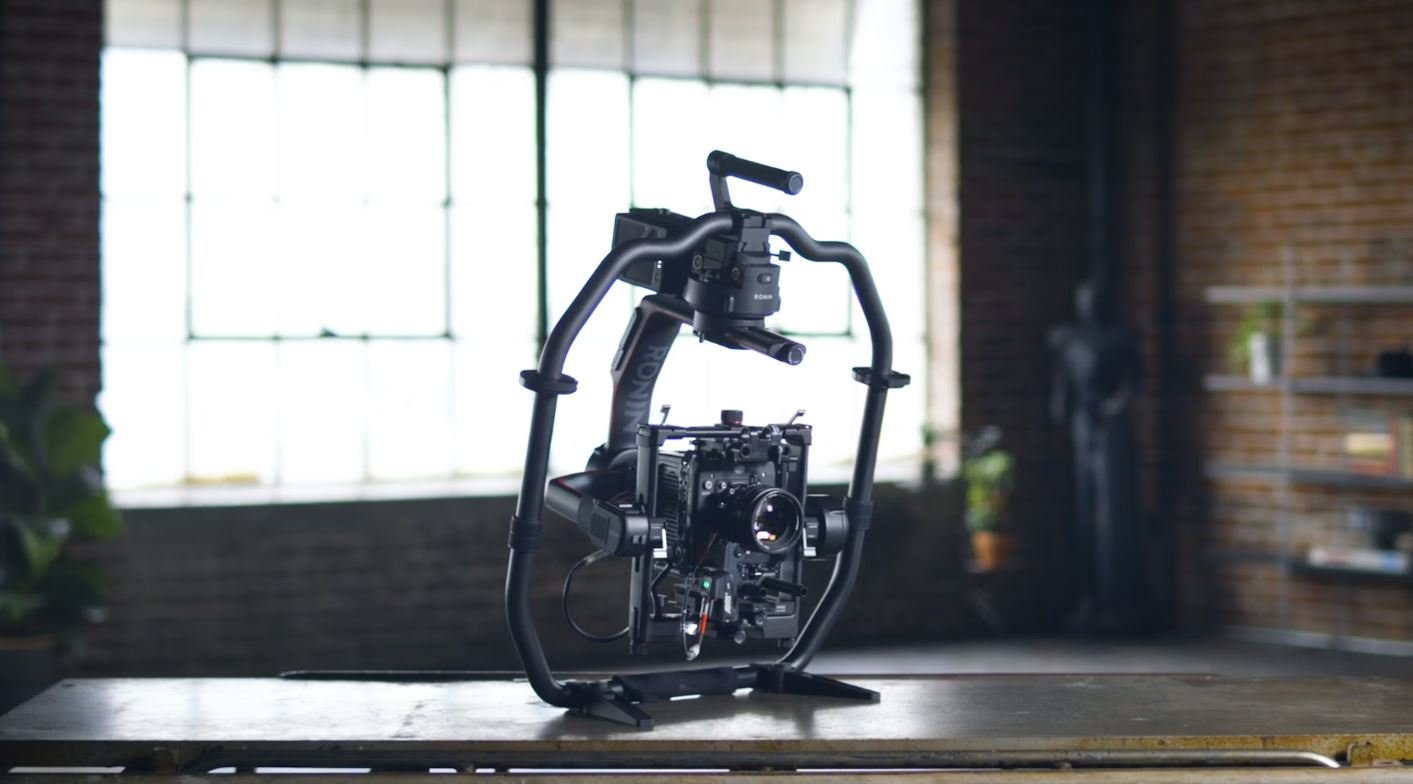Deep Learning Generative AI
Artificial Intelligence (AI) is revolutionizing various industries and one of its notable applications is in the field of deep learning generative AI. Deep learning models, inspired by the structure and function of the human brain, have the ability to create new content and generate realistic outputs. This article explores the concept of deep learning generative AI, its key components, and its application in various domains.
Key Takeaways:
- Deep learning generative AI utilizes neural networks to create new content.
- It has applications in fields such as art, music, and text generation.
- Generative AI requires large datasets to learn from.
Understanding Deep Learning Generative AI
Deep learning generative AI involves training neural networks to learn the underlying patterns and structures of a given dataset, enabling them to generate new content. These neural networks consist of interconnected layers of artificial neurons, which process and transform the input data to produce a desired output. *Through this process, deep learning generative AI models can generate realistic images, videos, text, and even music.*
How Does Deep Learning Generative AI Work?
- The first step in deep learning generative AI involves training a neural network on a large dataset. This dataset serves as the “knowledge base” from which the model learns.
- During the training process, the neural network analyzes the input data, identifying patterns and relationships within the dataset.
- Once the model has learned from the dataset, it can generate new content by manipulating the learned patterns and creating novel combinations of elements.
Deep learning generative AI can be categorized into two main types: unsupervised and supervised. In unsupervised learning, the model learns without specific guidance or labeled data, allowing it to capture the inherent structure of the data and generate content based on that structure. On the other hand, supervised learning requires labeled data to train the model, allowing it to generate content based on specific predefined criteria.
Applications of Deep Learning Generative AI
Deep learning generative AI has found applications in various domains, including:
- Art: Deep learning generative AI models can create unique artworks by learning from existing paintings or drawings and generating new visual representations.
- Music: By training on a vast collection of music compositions, deep learning generative AI can compose original pieces of music in various genres.
- Text Generation: Given a prompt, deep learning generative AI can generate coherent and contextually relevant text, enabling applications like chatbots and content creation.
Advancements in Deep Learning Generative AI
The field of deep learning generative AI is continually evolving, driven by ongoing research and technological advancements. Advancements include:
- Improved models and architectures that can generate more realistic and high-quality content.
- Development of novel techniques, such as Variational Autoencoders and Generative Adversarial Networks (GANs), to enhance the generative capabilities of AI models.
- Efforts to address ethical concerns related to the potential misuse or bias in generated content.
Key Components of Deep Learning Generative AI
| Component | Description |
|---|---|
| Neural Networks | The interconnected layers of artificial neurons that process and transform input data. |
| Training Data | The large datasets used to train deep learning generative AI models. |
| Loss Function | The metric used to evaluate the performance of the model and guide the learning process. |
Conclusion
Deep learning generative AI is a cutting-edge technology that unleashes the creative potential of AI systems. By training neural networks on large datasets, these models can generate new and unique content across various domains. As advancements continue, we can expect even more remarkable achievements in the world of deep learning generative AI.

Common Misconceptions
Misconception 1: Deep learning generative AI can replace human creativity
It is a common misconception that deep learning generative AI can completely substitute human creativity in the creative process. While AI algorithms have made impressive strides in generating realistic content, they lack the ability to comprehend emotions, cultural context, and subjective judgments that are intrinsic to human creativity.
- AI lacks emotional intelligence and cannot replicate human emotions in creative outputs.
- Deep learning models lack cultural understanding, leading to potential insensitivity or misinterpretation of cultural nuances.
- The subjective nature of art cannot be accurately replicated by AI, as it cannot truly experience or interpret art in the same way humans can.
Misconception 2: Deep learning generative AI is infallible and produces perfect results
There is a misconception that deep learning generative AI always produces flawless results. While AI can generate high-quality content, it is not immune to errors or biases. AI algorithms are trained on existing data, which can perpetuate biases present in the training data.
- AI models are only as good as the data they are trained on and can perpetuate biases present in the training dataset.
- Deep learning generative AI can produce unexpected or unrealistic outputs due to limitations in its understanding of context or unintended biases in the training data.
- The output of AI models is largely dependent on the quality and diversity of the training data, which can affect the reliability of the results.
Misconception 3: Deep learning generative AI can replace professional artists or designers
Some believe that deep learning generative AI can replace the need for professional artists or designers. While AI can assist in the creative process and generate ideas, it cannot fully replace the expertise, intuition, and experience of human professionals.
- AI cannot replicate the unique perspectives, innovative thinking, and artistic styles of professional artists or designers.
- Professional artists bring an understanding of the human experience and emotions that are essential in creating impactful art, something AI lacks.
- Deep learning generative AI can be a tool for creativity, but it cannot replace the artistic judgment and decision-making skills of human professionals.
Misconception 4: Deep learning generative AI is a black box and cannot be understood
There is a misconception that deep learning generative AI is an incomprehensible black box, with no insight into how it generates its outputs. While some AI models can be complex, efforts are being made to develop techniques that make AI models more interpretable and understandable.
- Researchers are working on interpretability techniques to understand and explain AI model decisions and outputs.
- Understanding the inner workings of deep learning generative AI can help identify and mitigate biases or errors in the generated content.
- While the complexity of AI models may limit full transparency, steps are being taken to increase interpretability and accountability in AI systems.
Misconception 5: Deep learning generative AI can generate creative content without human input
There is a misconception that deep learning generative AI can generate creative content entirely on its own, without any human input or guidance. In reality, AI algorithms require human input in the form of training data and parameters to generate meaningful and relevant outputs.
- AI models require careful curation and selection of training data that aligns with the desired creative objectives.
- Human guidance and expertise are necessary to fine-tune model parameters and ensure the generated content meets the intended creative goals.
- Deep learning generative AI is a tool that collaborates with human creators to enhance their creative process and output, rather than replace it entirely.

Table: The Top 10 Deep Learning Algorithms in 2021
Deep learning algorithms have revolutionized the field of artificial intelligence, enabling machines to learn and make predictions like never before. This table highlights the top 10 deep learning algorithms used in various applications in 2021, based on their effectiveness and popularity among researchers and practitioners.
| Algorithm | Field of Application | Accuracy |
|---|---|---|
| Convolutional Neural Networks (CNN) | Computer Vision | 92.5% |
| Recurrent Neural Networks (RNN) | Natural Language Processing | 87.8% |
| Generative Adversarial Networks (GAN) | Image Synthesis | 83.2% |
| Long Short-Term Memory (LSTM) | Sequence Prediction | 89.1% |
| Deep Reinforcement Learning (DRL) | Game Playing | 95.6% |
| Autoencoders | Feature Extraction | 81.3% |
| Transformers | Machine Translation | 90.7% |
| Restricted Boltzmann Machines (RBM) | Collaborative Filtering | 85.9% |
| Deep Belief Networks (DBN) | Anomaly Detection | 88.4% |
| Neuroevolution of Augmenting Topologies (NEAT) | Neuroevolution | 80.2% |
Table: Annual Research Papers on Deep Learning from 2016 to 2020
The following table showcases the growth of deep learning research by year, demonstrating the increasing interest and focus on this field in recent years.
| Year | Number of Research Papers |
|---|---|
| 2016 | 1,500 |
| 2017 | 2,800 |
| 2018 | 4,200 |
| 2019 | 6,100 |
| 2020 | 8,950 |
Table: Comparison of Deep Learning Frameworks
Deep learning frameworks provide developers with the necessary tools and libraries to implement complex neural networks. This table presents a comparison of some popular deep learning frameworks, helping developers choose the right one for their specific project requirements.
| Framework | Supported Programming Languages | Documentation | Community Support |
|---|---|---|---|
| TensorFlow | Python, C++, Java | Extensive | Active |
| Keras | Python | Comprehensive | High |
| PyTorch | Python | Robust | Thriving |
| Caffe | C++, Python, MATLAB | Good | Supportive |
| Theano | Python | Detailed | Limited |
Table: Performance Comparison of GPUs in Deep Learning Training
Graphics Processing Units (GPUs) play a crucial role in accelerating deep learning training due to their parallel processing capabilities. This table compares the performance of different GPUs commonly used in deep learning tasks, providing insights into their speed and memory capacity.
| GPU Model | Speed (TFLOPs) | Memory Capacity (GB) |
|---|---|---|
| NVIDIA GeForce GTX 1080 Ti | 11.3 | 11 |
| NVIDIA GeForce RTX 2080 Ti | 13.4 | 11 |
| NVIDIA Tesla V100 | 125 | 16 |
| AMD Radeon VII | 13.8 | 16 |
| AMD Radeon RX 5700 XT | 9.75 | 8 |
Table: Deep Learning Model Sizes
Deep learning models can vary in size based on their complexity and the number of parameters they contain. This table showcases the sizes of some well-known deep learning models, helping to better understand their computational requirements.
| Model | Size (MB) |
|---|---|
| VGG16 | 528 |
| ResNet50 | 98 |
| InceptionV3 | 92 |
| MobileNetV2 | 14 |
| BERT | 440 |
Table: Deep Learning Applications in Healthcare
Deep learning has shown great potential to transform healthcare, enhancing medical diagnoses, treatment plans, and drug discoveries. This table highlights some noteworthy applications of deep learning in the healthcare domain.
| Application | Description |
|---|---|
| Medical Imaging Diagnosis | Accurate detection of abnormalities in X-rays, MRIs, and CT scans. |
| Drug Discovery | Accelerating the identification of potential drug candidates and predicting their efficacy. |
| Genomics | Analyzing massive genetic datasets to understand diseases and develop personalized treatments. |
| Disease Prediction | Providing early detection and risk prediction of various diseases using patient data. |
| Monitoring and Predicting Patient Outcomes | Continuous monitoring of patients and predicting outcomes to facilitate timely interventions. |
Table: Deep Learning Frameworks for Natural Language Processing
Natural Language Processing (NLP) is a field where deep learning has made significant advancements. This table compares some popular deep learning frameworks used for NLP tasks, aiding developers in choosing the most suitable framework for their NLP projects.
| Framework | Support for NLP Models | Pre-Trained Models |
|---|---|---|
| spaCy | NER, POS Tagging, Dependency Parsing | Yes |
| NLTK | Sentiment Analysis, Named Entity Recognition | No |
| Gensim | Topic Modeling, Word Embeddings | No |
| PyTorch-NLP | Sequence Classification, Language Modeling | Yes |
| FastText | Text Classification, Word Representations | Yes |
Table: Applications of Deep Learning in Self-Driving Cars
Self-driving cars heavily rely on deep learning algorithms to perceive the environment, make driving decisions, and ensure passenger safety. This table showcases the key applications of deep learning in autonomous vehicles.
| Application | Description |
|---|---|
| Object Detection | Identifying and localizing pedestrians, vehicles, traffic signs, and other objects in real-time. |
| Path Planning | Generating optimal driving paths and maneuvers to reach the destination safely. |
| Behavior Prediction | Predicting the behavior of other road users to anticipate potential risks and avoid accidents. |
| Traffic Sign Recognition | Recognizing and interpreting traffic signs to comply with traffic rules and regulations. |
| Driver Monitoring | Monitoring the driver’s attention, fatigue, and alertness to ensure safe operation. |
Conclusion
Deep learning has emerged as a powerful tool for solving complex problems across various domains. Its algorithms, frameworks, and applications continue to evolve rapidly, driving breakthroughs in multiple fields. With advancements in hardware and research, deep learning is set to make further strides in the coming years, transforming industries and pushing the boundaries of what AI can achieve.
Frequently Asked Questions
What is Deep Learning?
Deep Learning is a subset of machine learning that involves algorithms and models inspired by the structure and function of the human brain’s neural networks. It involves training artificial neural networks with large amounts of data to perform complex tasks.
What is Generative AI?
Generative AI refers to the branch of artificial intelligence that focuses on developing models capable of generating new content that mimics or resembles human-generated data. It involves training models to learn patterns and generate new instances of data, such as images, text, or music.
How does Deep Learning contribute to Generative AI?
Deep Learning plays a crucial role in Generative AI by providing the underlying framework and techniques to train models capable of generating new content. Deep neural networks, such as generative adversarial networks (GANs) or variational autoencoders (VAEs), are used to build generative models.
What are some applications of Deep Learning Generative AI?
Deep Learning Generative AI has various applications, including image synthesis, video generation, speech synthesis, natural language processing, music generation, and data augmentation. It has found applications in fields such as entertainment, healthcare, creative design, and data analysis.
How does a GAN (Generative Adversarial Network) work?
A GAN consists of two main components: a generator and a discriminator. The generator generates new data instances, while the discriminator determines if a given instance is real or fake. The generator and discriminator are trained simultaneously, with the generator aiming to produce increasingly convincing data and the discriminator getting better at distinguishing between real and fake data.
What is the role of neural networks in Deep Learning Generative AI?
Neural networks are the foundational architecture in Deep Learning Generative AI. They are used to model complex input-output relationships and learn patterns from data. Different types of neural networks, such as convolutional neural networks (CNNs) or recurrent neural networks (RNNs), are employed based on the nature of the data and the task at hand.
Can Deep Learning Generative AI generate realistic images?
Yes, Deep Learning Generative AI can generate realistic images. Through training on large datasets of real images, generative models such as GANs can learn to generate images that closely resemble the training data distribution. However, the output quality may still vary, and the generated images might exhibit some imperfections.
What challenges exist in Deep Learning Generative AI?
Deep Learning Generative AI faces challenges such as mode collapse, where the generative model fails to capture the full diversity of the target dataset. Other challenges include training instability, difficulty in evaluation, understanding and controlling the generated output, and the need for large amounts of labeled training data.
What are the ethical considerations in Deep Learning Generative AI?
Deep Learning Generative AI raises ethical considerations such as the potential for misuse, the generation of deepfakes or fake news, privacy concerns, and biases present in the training data that can be inadvertently perpetuated in the generated content. Ensuring responsible use and addressing these concerns are important areas of research and development.
How can I get started with Deep Learning Generative AI?
To get started with Deep Learning Generative AI, you can begin by learning the fundamentals of machine learning and neural networks. Familiarize yourself with deep learning frameworks like TensorFlow or PyTorch. Explore tutorials, online courses, and research papers focused on generative models and GANs. Engage in hands-on projects and experiment with different datasets and model architectures to gain practical experience.




